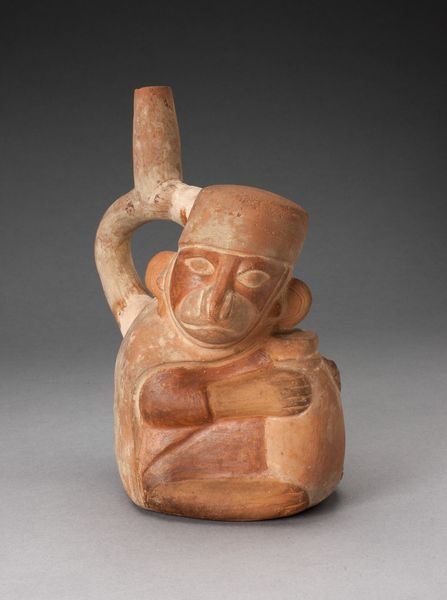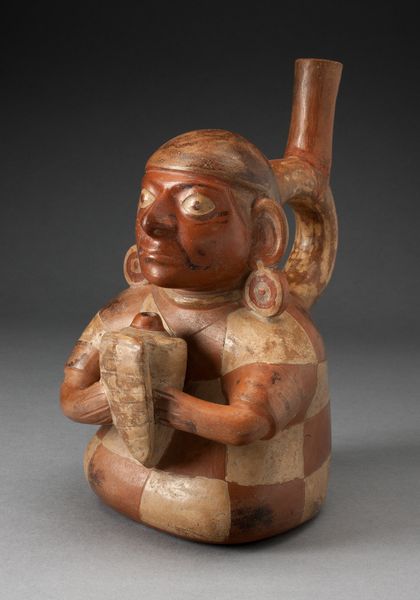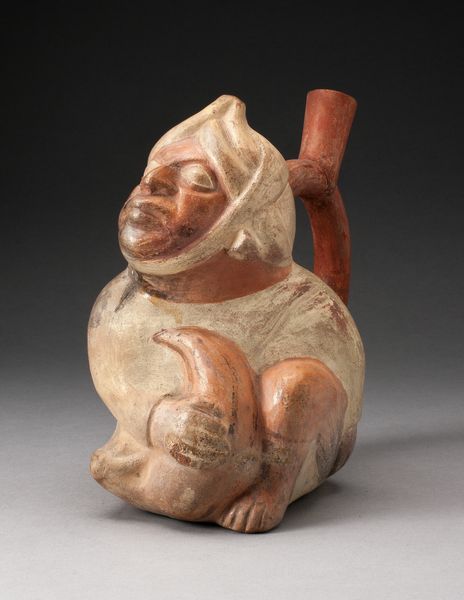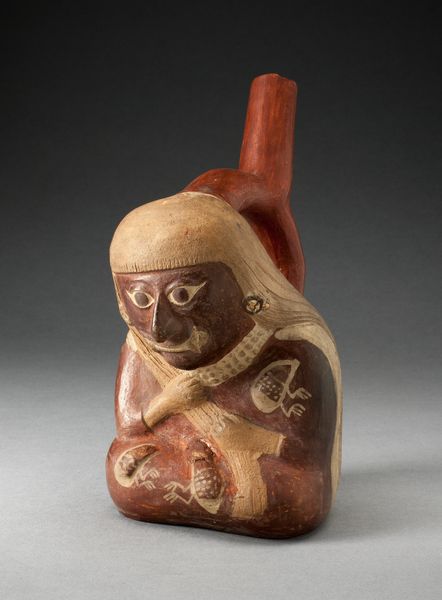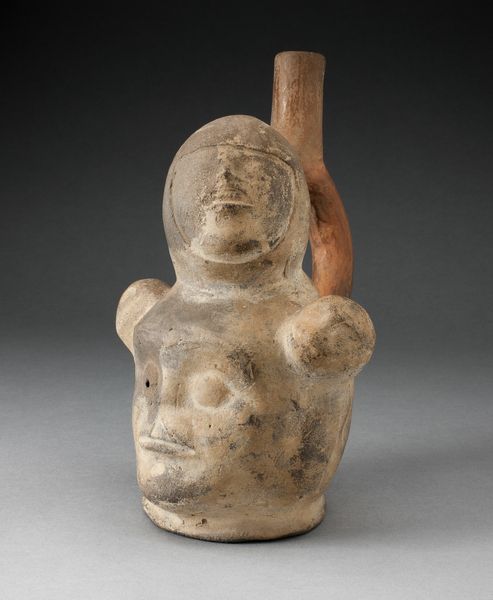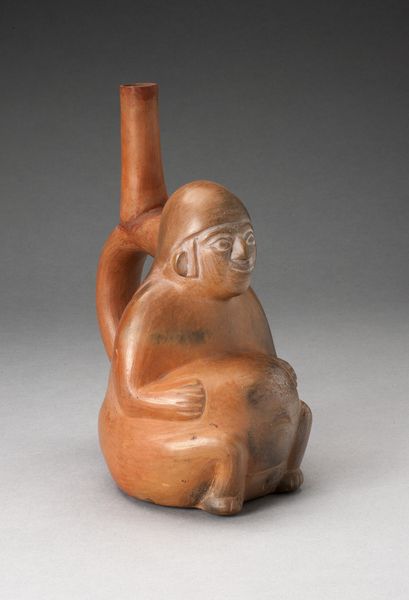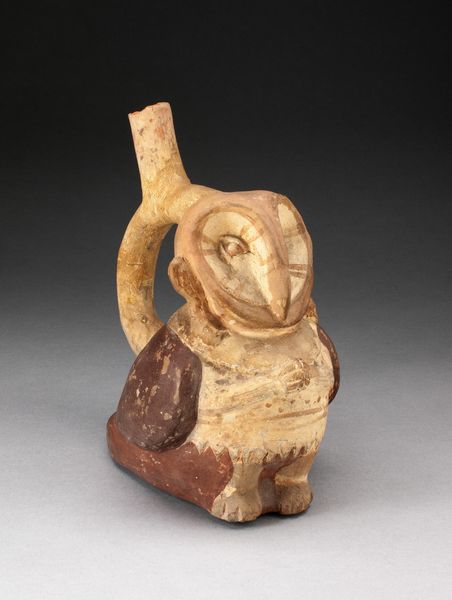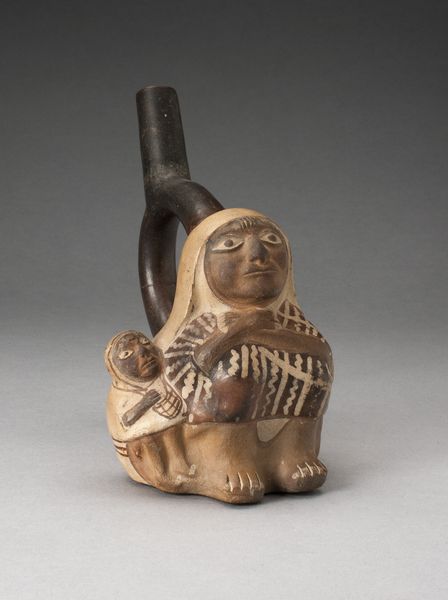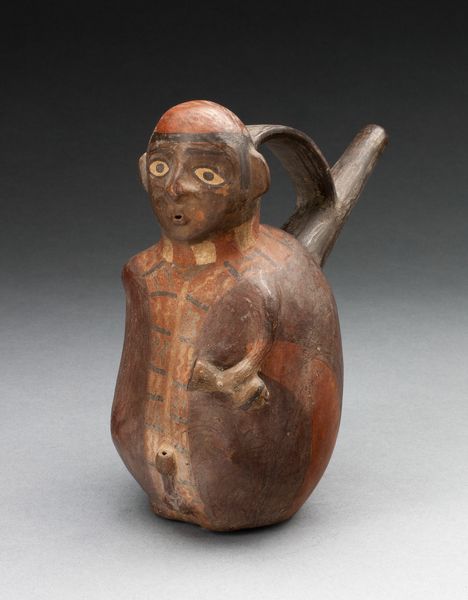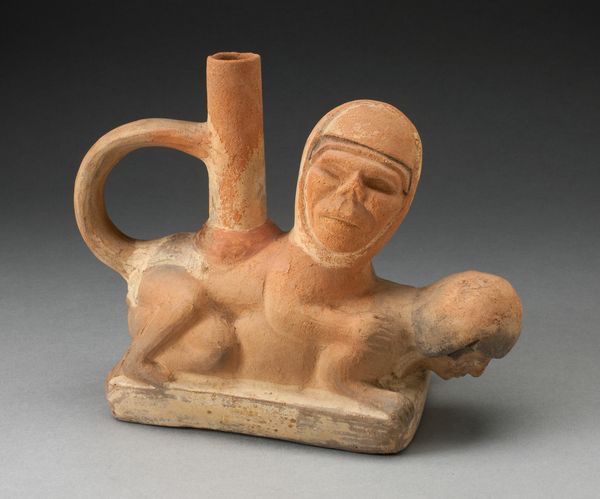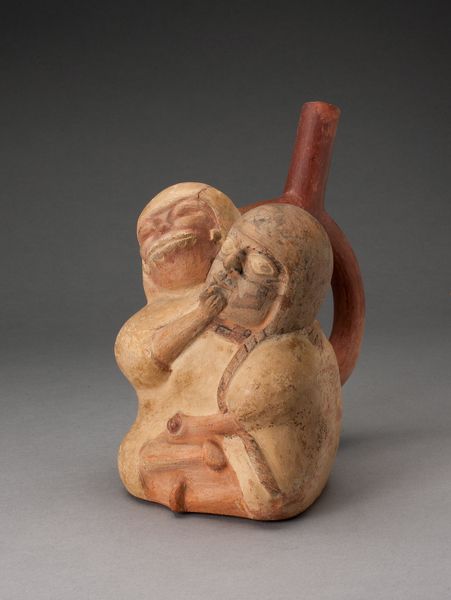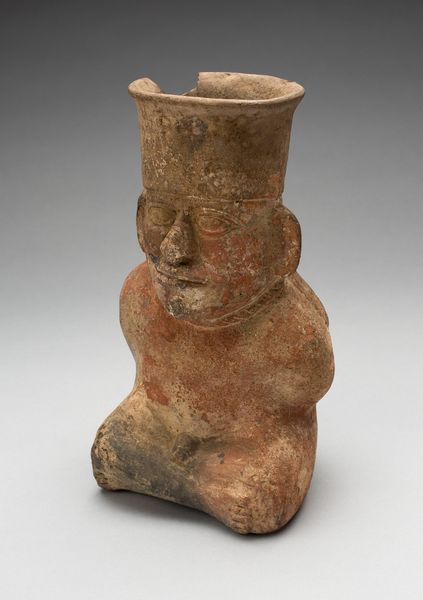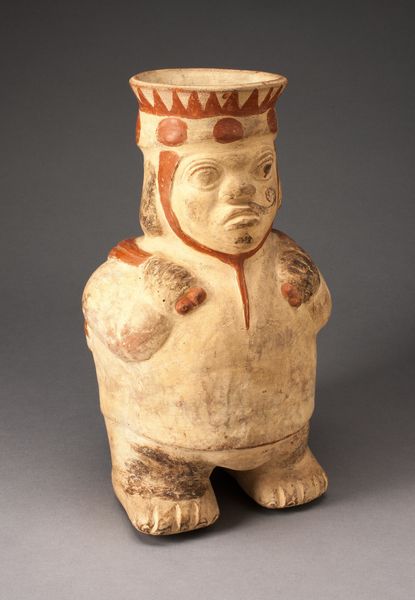
Rhyton in the Form of a Man with an Exaggerated Phallus c. 100 - 500
0:00
0:00
ceramic, sculpture, terracotta
#
sculpture
#
ceramic
#
figuration
#
sculpture
#
terracotta
#
erotic-art
#
indigenous-americas
Dimensions: H. 21.6 cm (8 1/2 in.)
Copyright: Public Domain
Editor: Here we have a ceramic piece titled "Rhyton in the Form of a Man with an Exaggerated Phallus" made by the Moche people sometime between 100 and 500 AD. It's quite striking – the figure is holding, well, his exaggerated phallus! What interpretations can we draw from this piece? Curator: As a materialist, I see this as a clear example of how the Moche intertwined craft and cultural values. The labor involved in creating this ceramic vessel, the skill in shaping and firing it, it all points to a deeply ingrained understanding of material resources and their social significance. How does the overt depiction of sexuality, crafted so meticulously, challenge our preconceived notions of 'high' art versus 'craft'? Editor: That's a perspective I hadn't considered. So, you're suggesting that the very act of creating this object, not just its symbolic value, held meaning for the Moche people? Curator: Precisely! The Moche weren't simply representing a concept; they were engaging with materials, with clay as an agent, shaping and reshaping their world. What do you notice about the form itself? Its functionality? The openings at the top? These are critical to understanding its role within Moche society. Editor: I guess I was so focused on the, uh, main feature that I missed the details! The holes suggest it was used for pouring something. Was that commonplace at that time? Curator: Yes, these rhytons were functional vessels, probably used in ritual contexts. By focusing on the material reality – the clay, the firing process, the vessel's function – we gain insights into Moche beliefs surrounding fertility, agriculture, and social power, things tied directly to materiality and the consumption of resources. What does its existence tell us about divisions of labor? Editor: Thinking about it that way really opens up the piece. It's not just an ancient erotic object; it's a testament to their skills and beliefs about their material culture. Curator: Indeed. And considering the material choices also avoids the risk of imposing purely Western interpretations. It’s about grounding ourselves in their reality through the object itself. Editor: Thank you. It’s changed the way I’ll look at other pieces. Curator: Excellent, my intention was to make you question what goes into every artistic expression.
